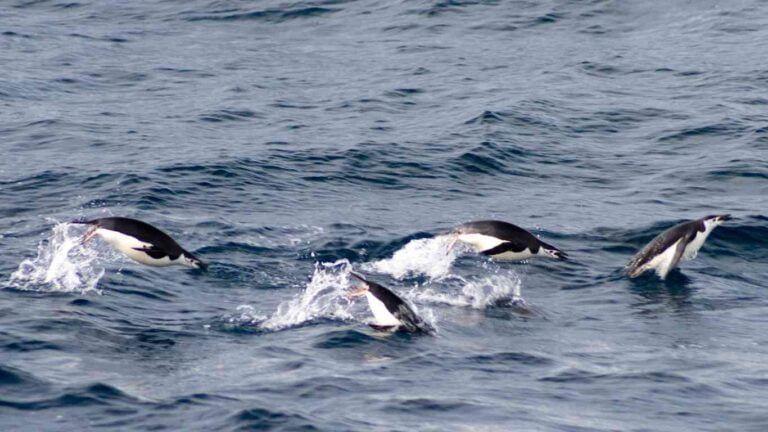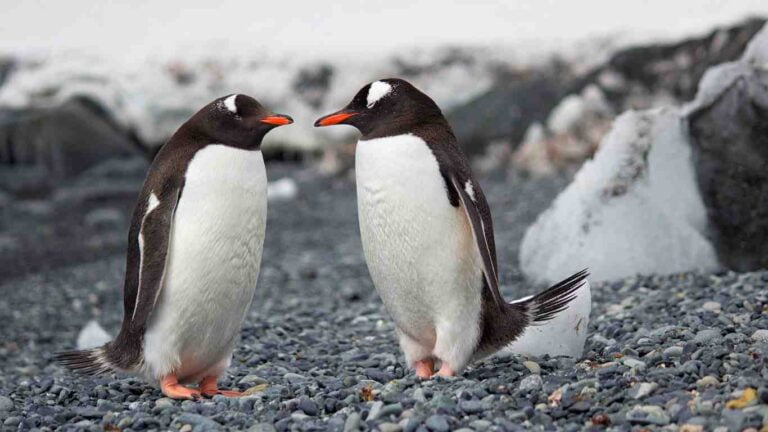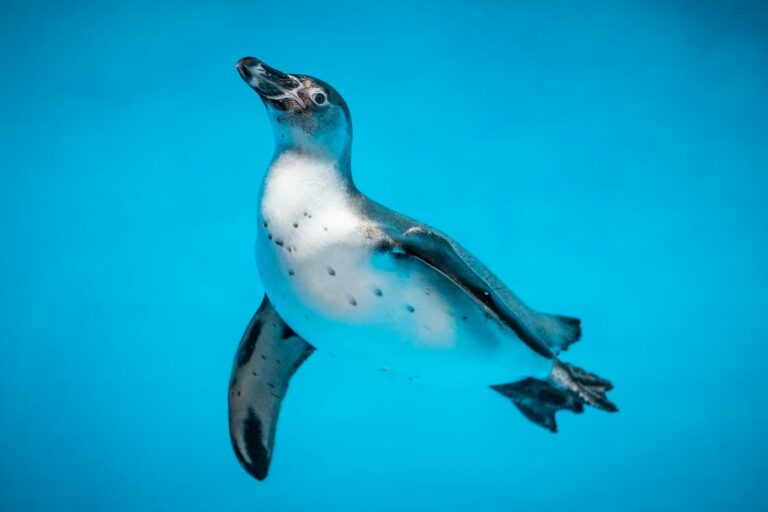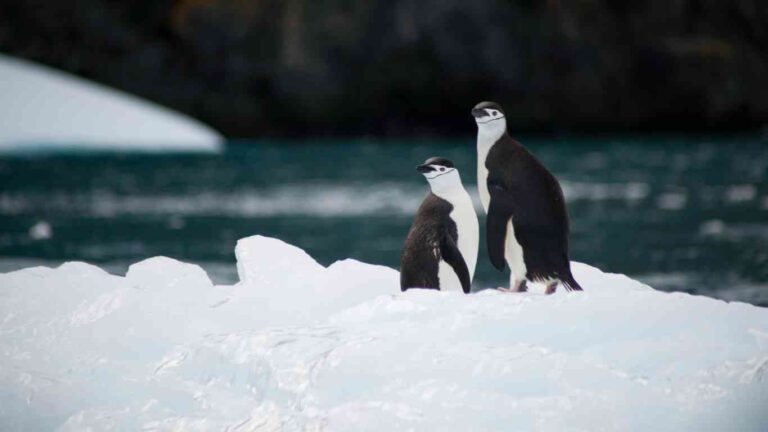Are Penguins Warm Blooded Creatures?
One of the intriguing aspects of penguin biology is their ability to thrive in some of the planet’s coldest environments.
This adaptability raises many questions about their physiological processes, particularly whether or not penguins are warm-blooded animals.
Are Penguins Warm Blooded Animals?
Penguins are warm blooded animals, meaning they maintain a stable internal body temperature independently of their surrounding environment.
This classification, common to all birds, equips them with the physiological ability to undertake energy intensive activities, such as swimming and hunting, without significant drops in body heat.
In the uncompromising chill of their polar habitats, penguins’ regulate their temperature synergistically through physical and behavioral adaptations.
Their unique feather structure forms a crucial insulating layer, trapping air close to the skin and warding off the penetrating cold.
Under their skin lies a layer of thick blubber, which functions similarly to a thermal wetsuit, retaining heat and keeping out the cold.
Are Penguins Cold Blooded?
Penguins are not cold-blooded. As birds, they are warm-blooded creatures who regulate their internal temperature. Their body adapts to maintain consistent warmth even in ice-cold habitats.
The term “cold-blooded” is often associated with animals that cannot regulate their internal body temperature, depending largely on the ambient environment to do so.
Unlike cold-blooded creatures such as reptiles and amphibians, penguins are indeed warm-blooded.
Being warm-blooded, or endothermic, means they maintain a constant body temperature regardless of the surrounding temperatures.
Penguins’ ability to preserve a consistent body heat allows them to endure the harsh and icy climates where they live and breed.
This internal temperature regulation is particularly vital for their survival in brutally cold habitats.
Do Penguins Get Cold?
Penguins can get cold, despite their adaptations. They have limits to their cold endurance and rely on behavioral strategies like huddling to conserve warmth in their frigid environments.
While penguins are indeed equipped to handle low temperatures, extreme cold can still affect them. Penguins have their ways of responding to the cold to keep their body temperature stable.
Even if they are well-protected against freezing temperatures, particularly cold spells can push their endurance to the limits.
What’s impressive is how penguins adapt behaviorally and biologically to mitigate the effects of cold on their bodies.
This aptitude to stay warm even in icy waters comes from specialized adaptations evolved over many generations.
How do Penguins Keep Warm?
Penguins keep themselves warm with insulated feathers, thick blubber, and preening for water-resistant, heat-trapping feathers. They also share warmth by huddling together.
A foundational strategy that penguins use to keep warm is through their remarkable feather system. Penguins have densely packed feathers providing both waterproofing and insulation.
The air trapped between feathers acts as a buffer against the cold. So, despite living in snowy and icy regions, the air pocket within their feathers keeps the skin from losing heat to the cold surroundings.
Additionally, penguin skin has a thick layer of blubber just beneath it, which acts like a built-in wetsuit. This layer insulates them and helps to keep warmth in and the cold out.
One of the most fascinating behaviors observed in penguins is their huddling. They cluster in groups to conserve warmth, with each penguin taking a turn on the outer border to ensure everyone benefits.
This mutual behavior effectively utilizes body heat by reducing the overall surface area exposed to the cold.
Every member of the group takes a turn at the edge, sharing the burden of exposure.
These adaptations demonstrate the penguins’ remarkable capacity to subsist and flourish in extreme cold, a testament to their-resilience as warm-blooded creatures.
Final Thoughts
In conclusion, possessing warm-blooded, endothermic characteristics, penguins maintain their body temperature even in the coldest environments.
Through behavioral and biological adaptions like dense feathers, blubber layers, and group huddling dynamics, they effectively defend against the biting chill of their habitats, making them perfectly suited to their cold ecosystem.
However, instances of extreme cold can still challenge their temperature regulation, demonstrating that even the best adapts have their limits.
(Featured image by Bill Harrison on Flickr is licensed under CC BY 2.0 Deed)







